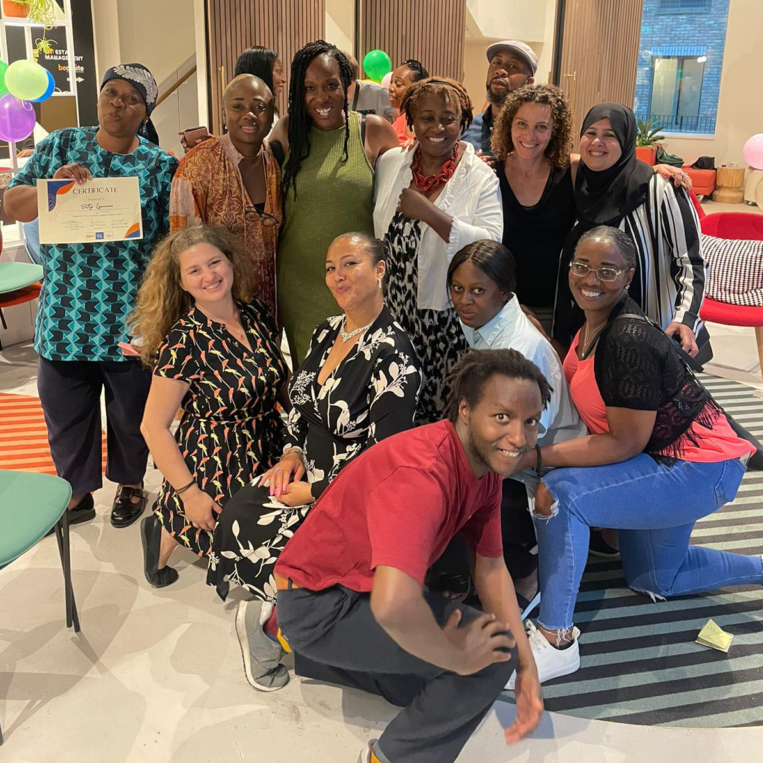Funding networks may not be a well-matched strategy for all donors, especially those who have only funded frontline direct service organizations. But for donors looking to invest in systems-level impact or ecosystem development, investing in networks may not only be a good fit, but may also be an opportunity to develop a generative relationship with their grantees—one with the potential to create new sources of value and impact.
Identifying as a network donor
The first step in being a donor to a network is acknowledging that things can and should look different when working with a network as compared to typical organizational grantees. No singular definition of what a network is covers their contextual nuances, but at their core, networks are an organizational configuration of diverse, like-minded stakeholders (typically called “members”) working in partnership toward a common purpose or goal. Networks can have varying degrees of formality but always operate with intentional, facilitated collaboration.
As we at Collective Mind have learned through our experience of working with networks and donors and through dedicated research and the collection of case studies from donors and networks across the globe, there is growing awareness and appetite for networks and donors to learn from each other and build mutually beneficial partnerships. Once donors decide to become a network funder, they can choose what role to play based on how and how much they and the networks want to engage and support or be supported:
The connector: Donors have a unique vantage point in being able to look for both common threads and diverse initiatives among and across their network grantees. As a result, they have the ability to curate spaces for learning, exchange, and collaboration. They can also take on a direct role as a network facilitator or convener, organizing, supporting, or funding spaces and opportunities for members within an individual network to engage. These roles may also organically merge into that of a network weaver, which entails building relationships, using their power to bring additional organizations or funders to the table, sharing partnership opportunities, or acting as a lever to support more marginalized strategies and approaches.
The thought partner: A true thought partnership should be a collaboration and have mutual benefits. Both the network and the donor bring deep and meaningful expertise and experience to help the network navigate along its chosen pathway. Together, they can develop joint strategies, tackle challenges, and offer guidance to each other. The involvement of the donor essentially lends an additional set of strategic eyes and ears as the network undertakes its journey and, in turn, the donor gains a front-row seat to the impact of their investment. At this level of engagement, they gain a view across the entirety of the network and can help multiply the perspectives, skills, and experiences related to its issues. They may even be able to serve as knowledge brokers, facilitating the transfer and exchange of knowledge from where it is abundant to where it is needed, or support activities like coaching, collaborative learning agendas, or participatory evaluation.
The member: In some cases, donors may also be network members. In this capacity, they can access the network’s services, resources, expertise, and activities and contribute to achieving the its objectives by, for example, sitting on an advisory committee, participating in a convening, or co-creating a product. The member role also opens up new pathways for donors to contribute to the values of work they believe in while minimizing undue influence as a financial benefactor. They can become part of the network ecosystem, embodying a network mindset, and demonstrating in practice the importance and advantage of the collaboration that they are supporting.
Follow their lead
A strong network-donor relationship can be an asset when paired with communication, care, good practice, and trust. At the same time, a donor’s influence and power can suppress a network’s potential when they are not discussed, balanced, or checked. A sound principle for donors to follow is to play the role the network asks of the donor, rather than pushing a donor-driven agenda or becoming overly involved in how the network operates. As one donor shared in our recent research, “There can be networks that offer support and serve as a place to find solidarity, or a place where action happens and work is taken forward together or in a coordinated fashion. Sometimes networks move back and forth between the two. Listen to where the network wants to go and see what tools they need to get there.”
In practice, following the lead of the network means trusting the network’s processes, managers, and members. Investing in a network means investing in the strengths, skills, and connections of its members, who are working together toward a common purpose. The role and influence of a donor should never overshadow or interfere with the network’s development, and the network should never lose sight of the members’ needs in pursuance of a donor’s advice. Donors should consistently check in with the network to understand what influence and advice it seeks. This is how trust is built and power dynamics are balanced.
A therapeutic exercise
The donor-network relationship is as nuanced as networks are complex. We believe it calls for a bi-directional shift in mindset. On one side, this means letting go of traditional ways of doing business, of achieving and evaluating impact, of holding power, of defining structural boundaries, and of giving and receiving financial resources. On the other, it entails actively learning, understanding, and embracing how networks uniquely create value through their members, harness collaborative capacity, and prioritize process over the long term over outputs in the short term. Perhaps most importantly, the relationship requires certain interpersonal attributes to be cultivated over time—patience, flexibility, listening, trust, creativity, communication, and accountability—from both the network donor and network grantee.
A well-managed and balanced network-donor relationship is one where donors start by listening to what the network needs, openly sharing what role they would like to play within a network, and then setting boundaries together. A generative, dynamic, and trusting network-donor relationship can position the network and its members to achieve greater outcomes and mutually gain value from their shared contributions and experience.

Kerstin Tebbe is founder and Seema Patel is a senior advisor at Collective Mind, a social enterprise focused on improving the practice and impact of networks.
originally published at Philanthropy News Digest
featured image found here

Network Weaver is dedicated to offering free content to all – in support of equity, justice and transformation for all.
We appreciate your support!
donate in the box above or click here



